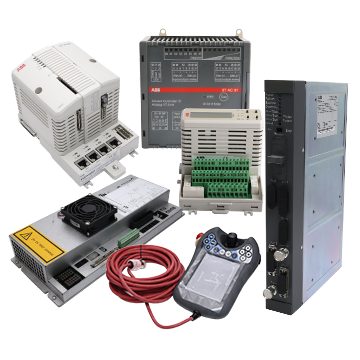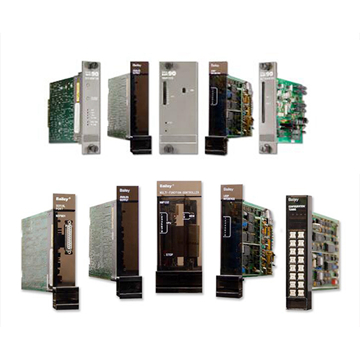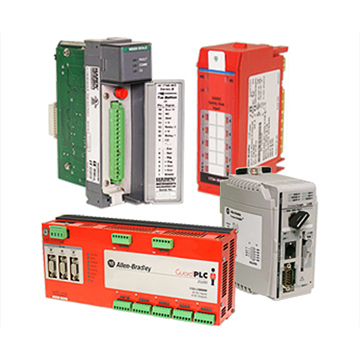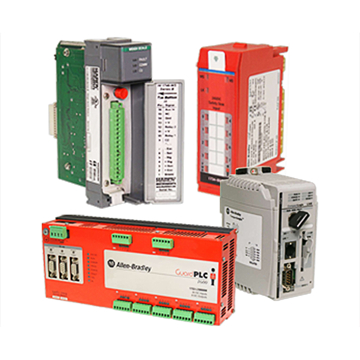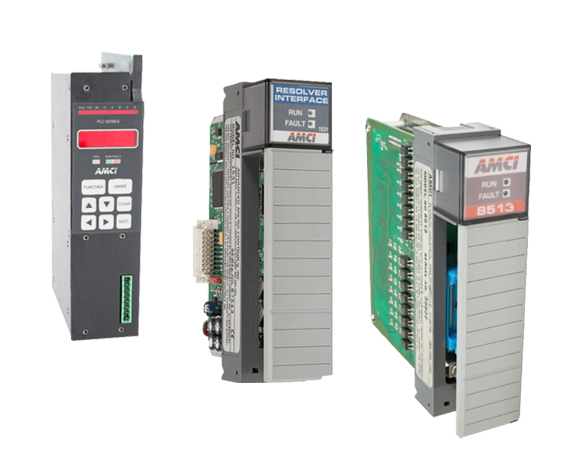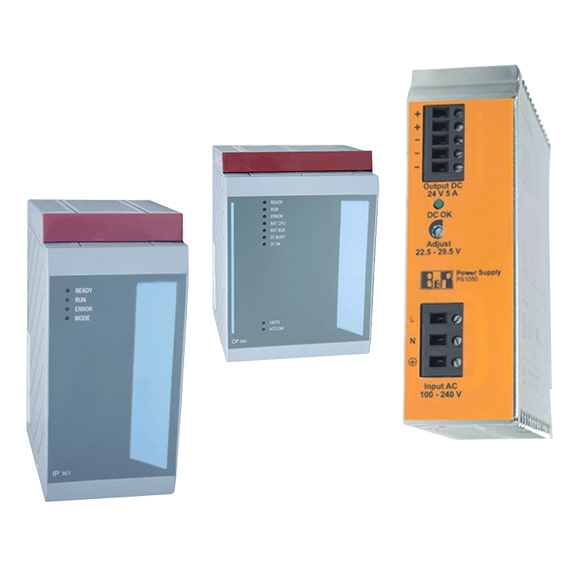Blog
Emerson's Trailblazing Path in Industrial Automation: Recent Insights
Overview of Emerson Electric Co.
Emerson Electric Co. stands as a beacon of innovation in the industrial automation sector. With a legacy of engineering excellence, Emerson has dedicated itself to enhancing productivity and operational efficiency across various industries, from manufacturing to energy. The company's focus on technological advancements ensures that it remains responsive to the ever-evolving challenges faced by businesses today, providing the tools necessary for organizations to thrive in competitive markets.
Cutting-Edge Technological Innovations
Emerson's commitment to innovation is evident in its latest technological advancements. The recent expansion of the Plantweb™ digital ecosystem exemplifies this drive, incorporating advanced analytics, cloud computing, and IoT technologies. This integrated approach allows for real-time data collection and analysis, enabling companies to make quick, informed decisions that enhance operational efficiency.
Moreover, Emerson’s Avenue™ Intelligent Manufacturing Platform leverages artificial intelligence and machine learning to optimize manufacturing processes. This platform aids manufacturers in predicting equipment failures, streamlining production schedules, and minimizing downtime, leading to substantial cost savings and improved operational performance.
Commitment to Sustainability
As environmental concerns gain prominence, Emerson is stepping up to support sustainability initiatives across industries. The company is devoted to helping clients achieve their sustainability objectives through innovative technologies designed to enhance energy efficiency and minimize waste.
In particular, Emerson’s DeltaV process automation system has proven invaluable in the oil and gas sector, allowing operators to monitor and optimize energy consumption in real time. This capability not only reduces carbon footprints but also integrates predictive maintenance features that extend equipment lifespan and reduce resource consumption.
Furthermore, Emerson actively implements sustainable practices within its operations. By focusing on waste reduction, energy conservation, and responsible sourcing, Emerson exemplifies its commitment to corporate responsibility while leading the charge in technological advancements.
Strategic Partnerships and Collaborations
Emerson understands the importance of collaboration in driving innovation within industrial automation. The company has forged strategic alliances with various technology vendors and industry leaders to create integrated solutions tailored to the complex challenges faced by its customers.
A prime example of this collaboration is Emerson’s partnership with prominent cloud service providers, which enhances its digital transformation capabilities. This synergy enables Emerson to offer solutions that harness cloud technologies for advanced data analytics and machine learning, ensuring that its offerings remain at the cutting edge of industry standards.
Additionally, Emerson's participation in industry forums and associations allows the company to contribute to the development of automation and control standards. By engaging with industry peers, Emerson stays attuned to market trends and can incorporate valuable customer feedback into its product development processes.
Looking Ahead: The Future of Industrial Automation
As Emerson continues to innovate and adapt, the company is well-positioned to tackle the future challenges of industrial automation. Its ongoing investments in research and development, particularly in areas such as IoT, AI, and machine learning, will drive the next generation of automation solutions.
Emerson remains committed to delivering customer-centric solutions that align with the shifting demands of industries. By focusing on the integration of emerging technologies and strengthening its collaborative efforts, Emerson aims to redefine the landscape of industrial automation, empowering businesses to operate more efficiently and sustainably.
Through its unwavering dedication to innovation, sustainability, and collaboration, Emerson Electric Co. has established itself as a leader in the industrial automation arena. With recent advancements in technology and strategic partnerships, the company is poised to meet the challenges of an ever-evolving market landscape. As organizations seek efficiency and resilience, Emerson will continue to provide the essential solutions needed to navigate the complexities of modern industrial environments. In shaping the future of industrial automation, Emerson is not only enhancing operational success but also contributing to a more sustainable and efficient global economy.
Recommended model:
Yokogawa
AAI143-H53
FOXBORO
AD916AE
Yokogawa
AAP135-S53
FOXBORO
FBM2/36 P0500RG
Yokogawa
ADV551-P60
FOXBORO
P0916DB
Yokogawa
EC401-11
FOXBORO
P0931RM
Yokogawa
SDV531-S63
FOXBORO
P0961CA
Yokogawa
AAI143-S50
GE
745-W3-P5-G5-HI-A-L-R-E-H
Yokogawa
SAV144-S53
GE
DS200RTBAG3AHC
Yokogawa
SDV541-S53
GE
UR7BH
Yokogawa
SSB401-13
GE
531X300CCHBDM3
GE
IS220PSCHH1A
GE
IC220STR003
GE
IS220PAICH1B
GE
DS200TCPSG1AME
GE
IS220PDIAH1A
GE
269PLUS-D/O-100P-125VDC
GE
IS220PDOAH1B
GE
DS200SHVMG1AED
GE
IS220PVIBH1A
GE
DS200TCQAG1BHF
GE
IS220PRTDH1B
ABB
SD811V1 3BSC610044R1
GE
531X300CCHBDM3
ABB
3BHE021889R0101 UFC721BE101
GE
IC220STR003
ABB
DSAX110 57120001-PC
GE
DS200TCPSG1AME
ABB
HEIA303892R1 ED1251A
GE
269PLUS-D/O-100P-125VDC
ABB
DSBC110 57310256-E
GE
DS200SHVMG1AED
ABB
AO610 3BHT300008R1
GE
DS200TCQAG1BHF
ABB
YXE152A YT204001-AF
GE
IS200VRTDH1DAC
ABB
SAFT181INF SAFT 181 INF
EPRO
PR6426/000-040 CON021
GE
IC697ALG321
EPRO
PR6423/000-020-CN CON021
GE
HE693IBS100
EPRO
PR6423/010-020-CN CON021
GE
DS200TCRAG1ACC
EPRO
PR6424/013-130 CON021
GE
IC200ALG264
EPRO
PR6423/13R-030 CON021
GE
531X175SSBAYM2
EPRO
PR6423/002-040 CON041
GE
IC693ALG391
EPRO
PR6424/006-131 CON041
GE
IC698ETM001
EPRO
PR6426/010-010 CON021
GE
531X160HFCACG1
EPRO
PR6423/000-000 CON011
HONEYWELL
51401583-100
EPRO
PR6423/014-010 CON021
HONEYWELL
MU-TSIM12 51303932-401
EPRO
PR6426/00 CON011/916-200
HONEYWELL
51202329-616
EPRO
PR6424/000-100 CON021
HONEYWELL
C7076A1015
EPRO
PR6423/002-001
HONEYWELL
51402573-150
EPRO
PR6423/010-040 CON021
HONEYWELL
900RSM-0101
EPRO
PR6423/00R-111-CN CON041
HONEYWELL
CIS-CPU 82114833-002


